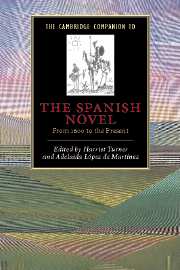2 - The legacy of Don Quijote and the picaresque novel
from Part 1 - Since Cervantes
Published online by Cambridge University Press: 28 May 2006
Summary
This chapter is concerned with two aspects of Don Quijote and the picaresque: how the novels were intended and received in their historical context, and what posterity made of them. Though modern criticism has tended to treat the Quijote and the picaresque novel as virtually opposed fictional worlds, they are much more closely related. Indeed, in some ways, Don Quijote grows out of Alemán's picaresque classic Guzmán de Alfarache (1599). Thus we should consider first the picaresque before Cervantes.
The genre was born in 1554 with the publication of the anonymousLazarillo de Tormes. Five years later, Lazarillo was blacklisted on the firstSpanish Index because of its irreverence towards the church, but was allowedto recirculate in expurgated form from 1573. The Inquisition’s disapprovalchecked the development of the picaresque for the next forty years; but thisgenre, and comic/satiric writing in general, revived spectacularly with thepublication in 1599 of the first part of Alemán’s novel and its wildfire editorialsuccess. A spate of robustly comic fiction followed in the immediate wakeof Guzmán de Alfarache, including Don Quijote, Part I (1605), togetherwith several picaresque sequels or successors to Guzmán, like Quevedo’s ElBuscón (written about 1605).
- Type
- Chapter
- Information
- The Cambridge Companion to the Spanish NovelFrom 1600 to the Present, pp. 15 - 30Publisher: Cambridge University PressPrint publication year: 2003
- 22
- Cited by



